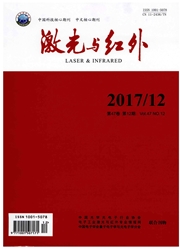

 中文摘要:
中文摘要:
针对于空间稳像系统摆镜的面型精度保持问题,实现摆镜的轻量化设计,在直径110 mm圆平面反射镜的设计过程中将机械结构拓扑优化引入到光学器件设计领域。对背部减重部分进行了拓扑优化设计。对拓扑优化设计的原理和方法做了较为详细的介绍。吸收了变密度法中的SIMP(Solid Isotropic Material with Penalization)插值算法和RAMP(Rational Approximation of Material Properties)插值算法的思想,提出了一种新型惩罚中心可调节的ASMP(Adjusted Solid Material with Penalization)插值算法,并对各种插值算法进行了仿真。仿真结果证明,基于本文提出的新型ASMP插值算法的拓扑优化结果正确可靠,有一定的优越性。同时使用新型方法对摆镜进行了优化,并与其他设计结果进行了比对,结果显示新型拓扑优化结果能够较大程度地提高面型精度,使用起来更加灵活方便。新型差值算法的提出是对现有拓扑优化的插值算法进行了补充完善,也为后续参数优化设计奠定了基础。
 英文摘要:
英文摘要:
In order to maintain the surface accuracy of the tilt mirror for space image stabilization system,the lightweight design of tilt mirror was realized. The topology optimization method was introduced into the design of a 110 mm round mirror. The support part of the mirror was designed by the method. Meanwhile,the theory and the method of topology optimization were introduced in detail. Through the thoughts of SIMP( Solid Isotropic Material with Penalization) and RAMP( Rational Approximation of Material Properties),ASMP( Adjusted Solid Material with Penalization) was proposed and its advantage was introduced. And simulations were done for various interpolation algorithms respectively. The results show that topology optimization result of ASMP interpolation algorithm is correct and reliable,and it is proved to be superior to the other interpolation algorithms. Meanwhile,topology optimization was done for the tilt mirror. The new topology optimization algorithm can improve the surface accuracy in a greater degree,and it is more flexible. The proposal interpolation algorithm can consummate traditional topology optimization interpolation algorithm,and it lays a solid foundation for the next parameter optimization.
 同期刊论文项目
同期刊论文项目
 同项目期刊论文
同项目期刊论文
 期刊信息
期刊信息
